Abstract
1 Simultaneous subjective estimates of pain intensity, using both visual analogue (VAS) and categorical measurements, have been carried out in patients with postoperative pain and patients with chronic pain due to cancer. The categorical scale selected had demonstrated a power function relationship to intensity in cross-modality tests in the laboratory. In our hands, the relationship of the analogue and categorical parameters was also best described in terms of a power function (y = 1.39 x2.261, where y = VAS and x = pain category).
2 When the population was divided into those patients who had postoperative pain and those who had chronic cancer pain, the responses of both groups also fit power curves (y = 0.99x2.99 in postoperative pain and y = 1.19x2.14 in chronic cancer pain). These curves diverged at the upper end of the scales where patients with chronic cancer pain tended to rate `strong', `severe' and `excruciating' pain as less intense on the analogue scale than did the postoperative patients. This is presumptive evidence that the two groups are interpreting their pain differently in the light of differing pain experiences. Concurrent VAS and categorical pain data are thus able to provide some insight into differences in interpretation of pain by a variety of patient groups. Similar analyses in terms of age, sex and pain aetiology are proposed.
3 Comparisons of VAS scores for individual pain categories at various times before and after drug administration demonstrate some downward vertical movement (slippage) in the categories after drug administration. VAS measurements seem to be more sensitive to smaller changes in effect than are the categorical measurements.
4 Increased sensitivity of VAS over categorical measurements was demonstrated in a twin crossover assay of oral zomepirac and intramuscular morphine in a limited population of 20 postoperative patients. The endpoints were peak and total relief as measured either by a VAS or a five-point categorical scale. Relative potency estimates were consistent for all parameters indicating oral zomepirac to be about one-sixth as potent as intramuscular morphine, but only VAS data gave finite 95% confidence limits in this small group of patients.
Full text
PDF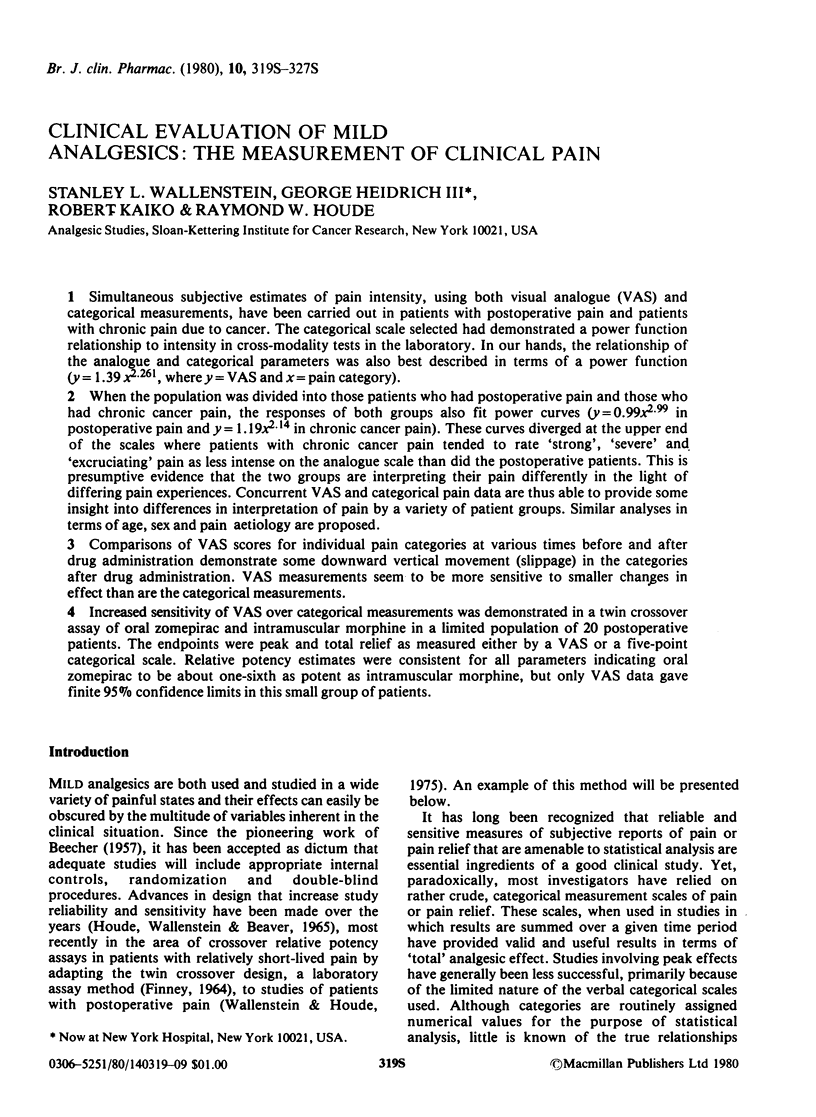
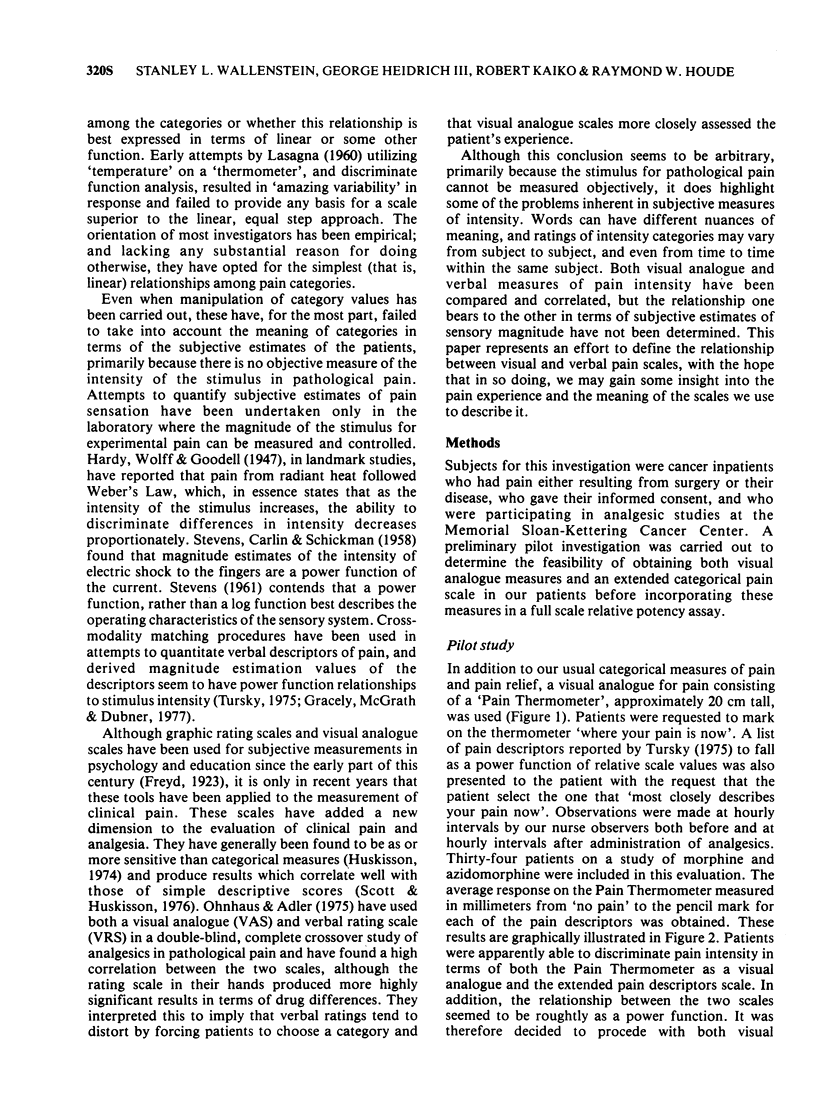
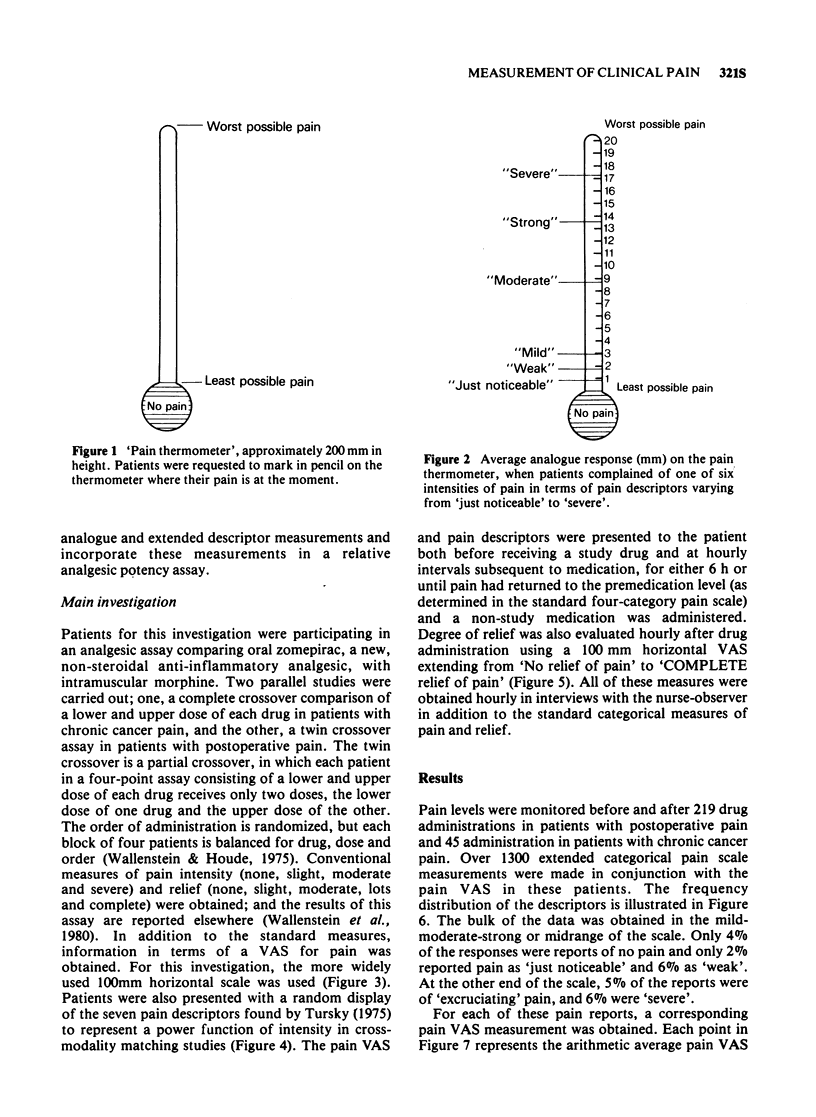
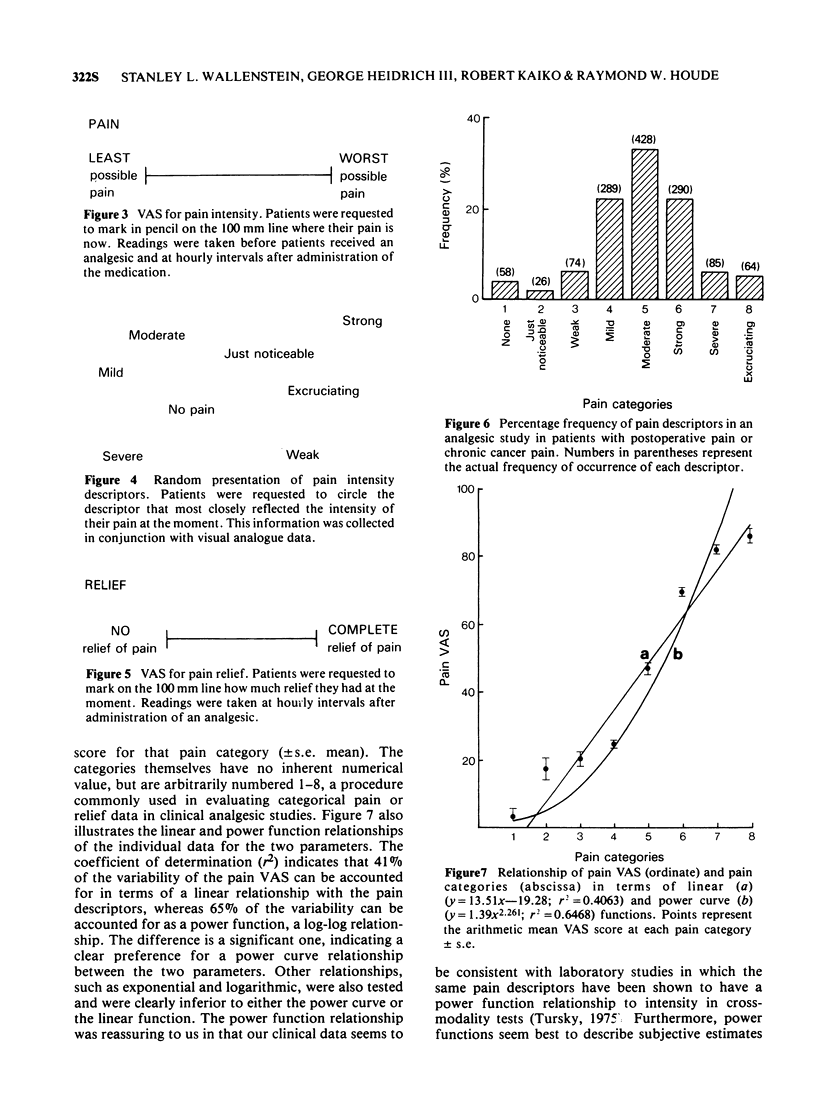
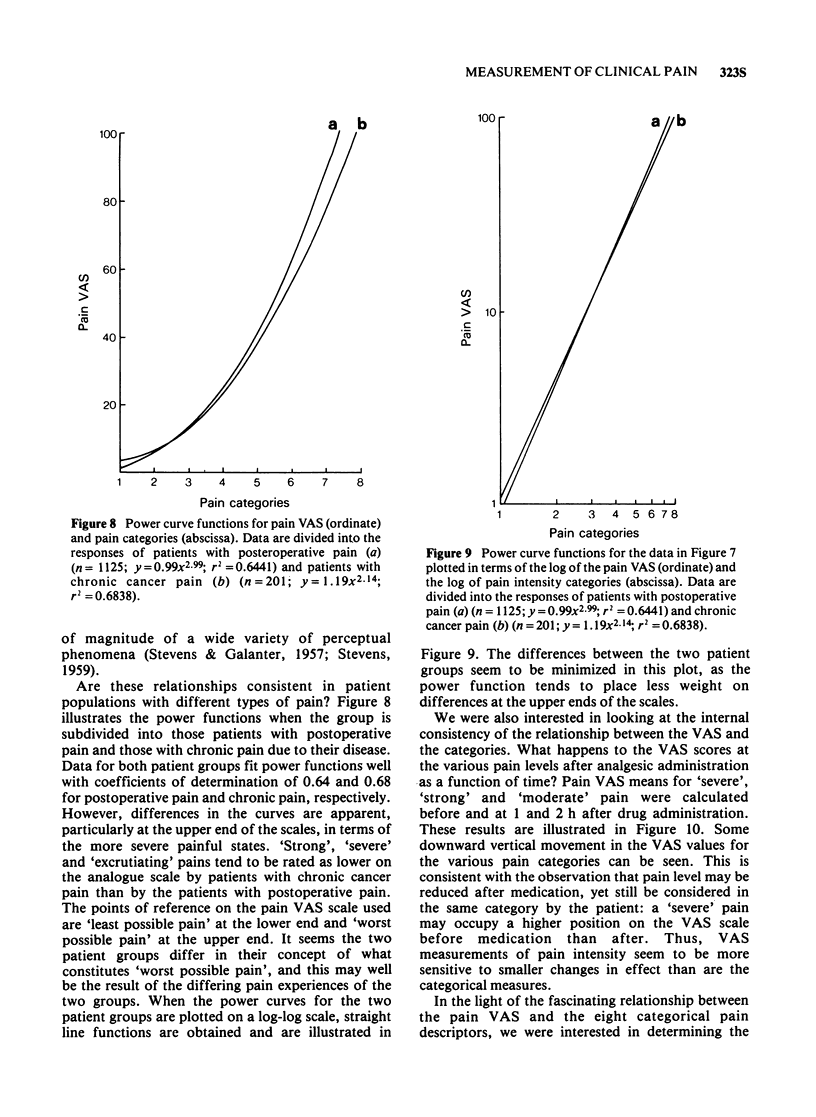
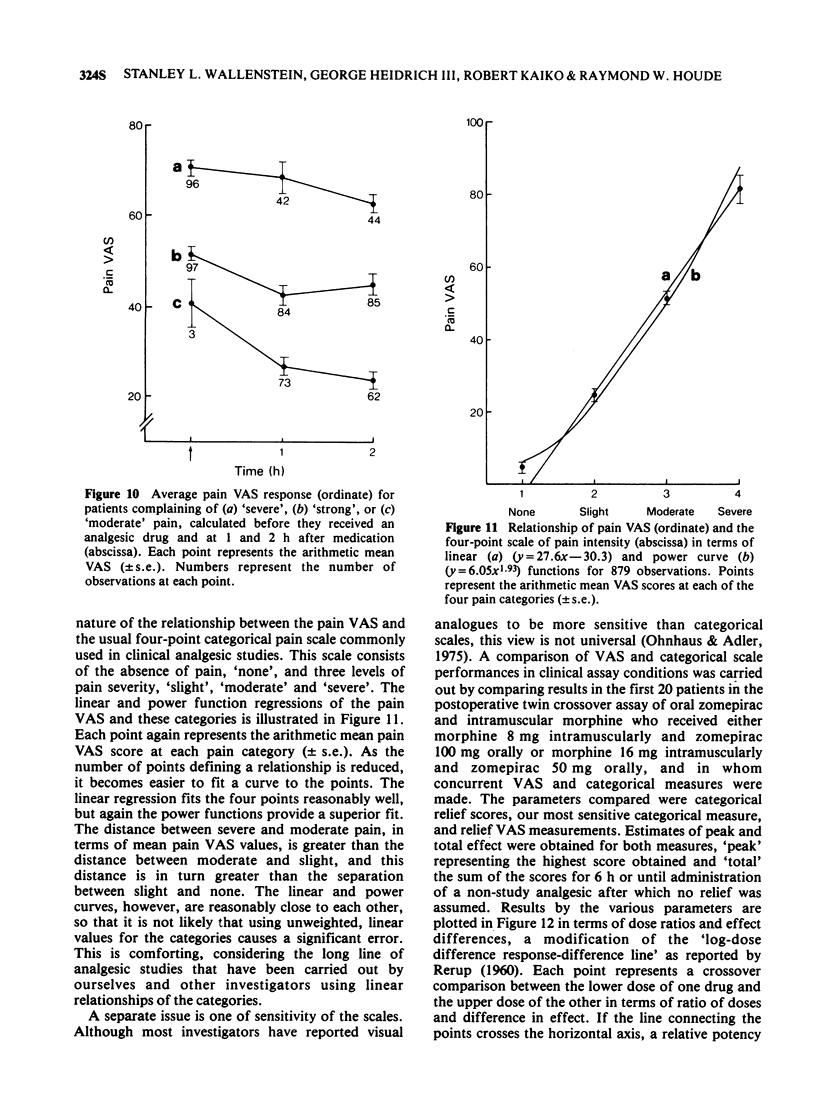
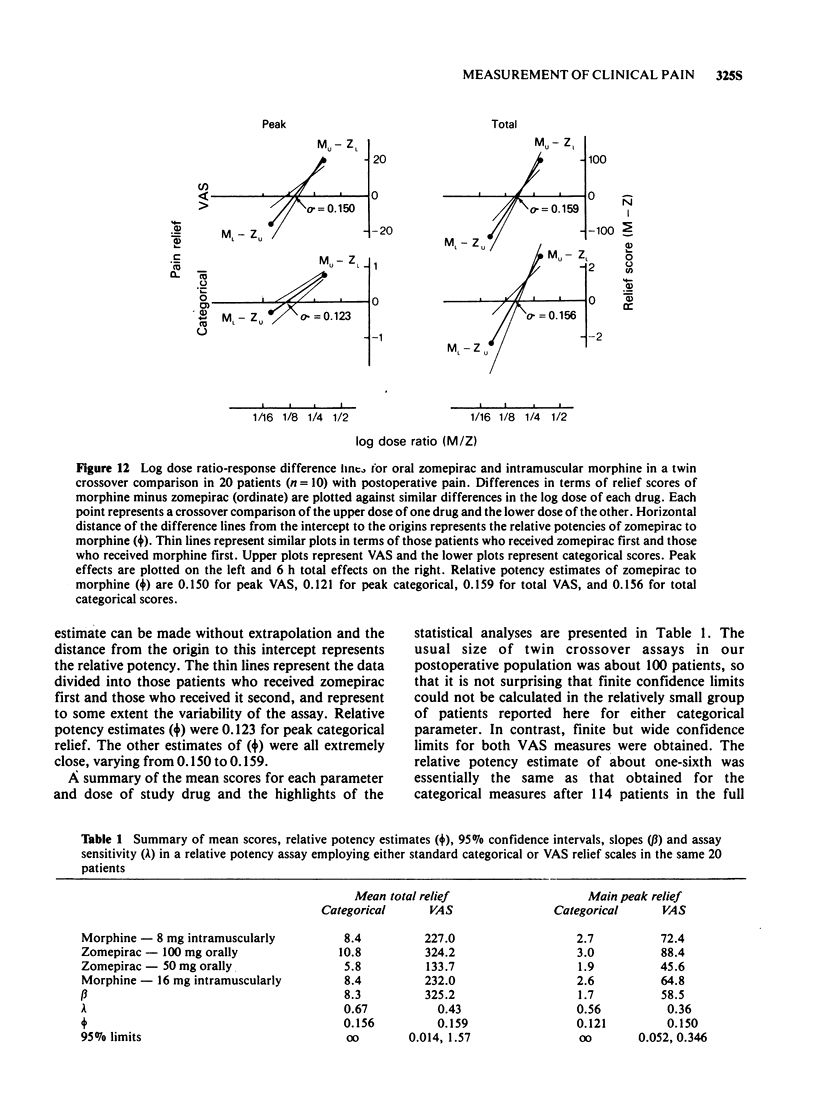
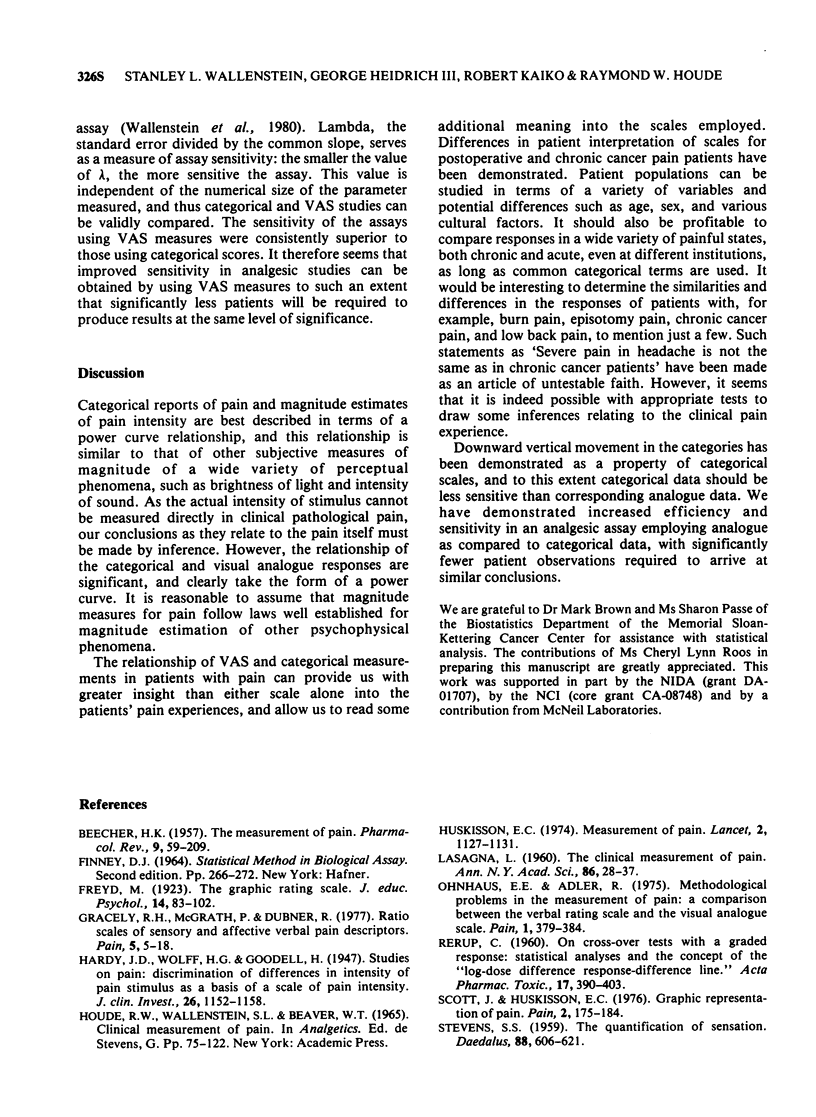

Selected References
These references are in PubMed. This may not be the complete list of references from this article.
- BEECHER H. K. The measurement of pain; prototype for the quantitative study of subjective responses. Pharmacol Rev. 1957 Mar;9(1):59–209. [PubMed] [Google Scholar]
- Gracely R. H., McGrath F., Dubner R. Ratio scales of sensory and affective verbal pain descriptors. Pain. 1978 Jun;5(1):5–18. doi: 10.1016/0304-3959(78)90020-9. [DOI] [PubMed] [Google Scholar]
- Hardy J. D., Wolff H. G., Goodell H. STUDIES ON PAIN: DISCRIMINATION OF DIFFERENCES IN INTENSITY OF A PAIN STIMULUS AS A BASIS OF A SCALE OF PAIN INTENSITY. J Clin Invest. 1947 Nov;26(6):1152–1158. doi: 10.1172/JCI101907. [DOI] [PMC free article] [PubMed] [Google Scholar]
- Huskisson E. C. Measurement of pain. Lancet. 1974 Nov 9;2(7889):1127–1131. doi: 10.1016/s0140-6736(74)90884-8. [DOI] [PubMed] [Google Scholar]
- LASAGNA L. The clinical measurement of pain. Ann N Y Acad Sci. 1960 Mar 30;86:28–37. doi: 10.1111/j.1749-6632.1960.tb42788.x. [DOI] [PubMed] [Google Scholar]
- Ohnhaus E. E., Adler R. Methodological problems in the measurement of pain: a comparison between the verbal rating scale and the visual analogue scale. Pain. 1975 Dec;1(4):379–384. doi: 10.1016/0304-3959(75)90075-5. [DOI] [PubMed] [Google Scholar]
- RERUP C. On cross-over tests with a graded response: statistical analyses and the concept of the "log-dose difference response-difference line". Acta Pharmacol Toxicol (Copenh) 1961;17:390–403. doi: 10.1111/j.1600-0773.1961.tb01658.x. [DOI] [PubMed] [Google Scholar]
- STEVENS S. S., CARTON A. S., SHICKMAN G. M. A scale of apparent intensity of electric shock. J Exp Psychol. 1958 Oct;56(4):328–334. doi: 10.1037/h0040896. [DOI] [PubMed] [Google Scholar]
- STEVENS S. S., GALANTER E. H. Ratio scales and category scales for a dozen perceptual continua. J Exp Psychol. 1957 Dec;54(6):377–411. doi: 10.1037/h0043680. [DOI] [PubMed] [Google Scholar]
- Scott J., Huskisson E. C. Graphic representation of pain. Pain. 1976 Jun;2(2):175–184. [PubMed] [Google Scholar]
- Stevens S. S. To Honor Fechner and Repeal His Law: A power function, not a log function, describes the operating characteristic of a sensory system. Science. 1961 Jan 13;133(3446):80–86. doi: 10.1126/science.133.3446.80. [DOI] [PubMed] [Google Scholar]


